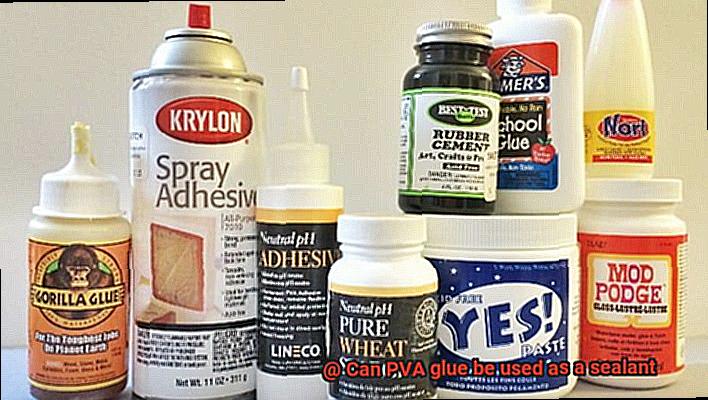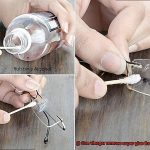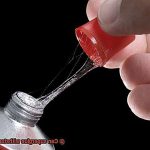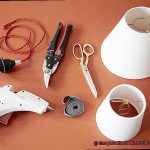Picture this: You’ve just finished your latest DIY project and you’re feeling pretty proud of yourself. But before you can admire your handiwork, you need to seal it up tight to protect it from damage and give it that professional finish.
Suddenly, panic sets in as you realize you don’t have a sealant on hand. But wait, what about that bottle of PVA glue sitting in your cupboard? Could it work as a sealant?
Well, the answer isn’t quite so straightforward. PVA glue – also known as Polyvinyl Acetate – is primarily used as an adhesive but can also be used as a sealant in some cases. This water-based glue creates a strong bond with all sorts of materials, from paper to wood and fabric.
Used as a sealant, PVA glue can help protect against moisture, dust, and even UV rays. However, not all surfaces are compatible with this versatile glue and it’s essential to apply it correctly for optimal results.
In this blog post, we’ll explore the different applications of PVA glue as a sealant and provide you with an in-depth guide on how to use it effectively.
So, sit back, relax and get ready to learn everything there is to know about using PVA glue as a sealant.
What is PVA Glue?
Contents
Polyvinyl Acetate, commonly known as PVA glue, is a water-based adhesive that has gained popularity for its versatility, ease of use, and affordability.
PVA glue is made up of a polymer chain that contains vinyl acetate monomer. When applied to a surface, the water in the glue evaporates, leaving behind a strong bond between the two surfaces. Its versatility allows it to be used on various materials such as wood, paper, fabric, and ceramics, making it the go-to choice for many projects.
One of PVA glue’s most significant advantages is that it dries clear, making it perfect for projects where appearance matters. This quality makes it an excellent choice for crafters who want an adhesive that won’t interfere with their project’s visual appeal.
Another advantage of using PVA glue is that it is non-toxic and easy to clean up with soap and water. Plus, it has a long shelf life and can be stored for extended periods without drying out. You can always count on PVA glue to be fresh and ready for use when you need it.
While PVA glue can be used as a sealant, it’s important to note that it’s not waterproof. It can provide some protection against moisture and act as a barrier against dust and other particles. However, if your project will be exposed to water for extended periods of time, you’ll need a specialized waterproof sealant instead.
Can PVA Glue Be Used as a Sealant?
Before you start slathering it on all your projects, let’s dive into when and where this water-based adhesive can be used as a sealant.
PVA glue, also known as polyvinyl acetate glue, is a popular choice for woodworking, paper crafts, and school projects because it creates a strong bond between two surfaces. Although it’s not waterproof, it is water-resistant and can endure some exposure to moisture without breaking down.
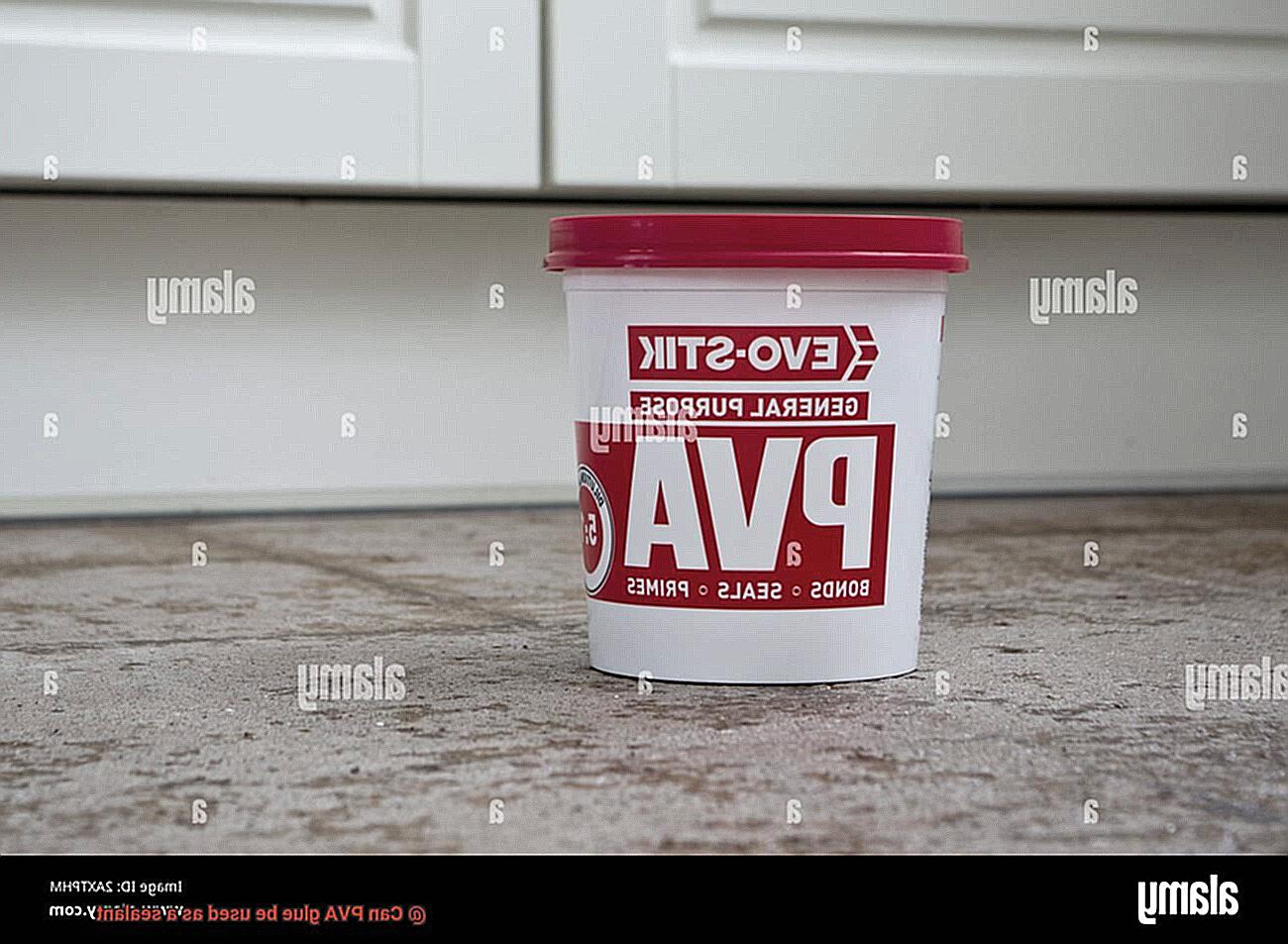
So, can PVA glue be used as a sealant? The answer is both yes and no. PVA glue can work as a sealant on porous surfaces like wood or paper by filling in small gaps and creating a protective barrier against moisture and dust. However, it may not work well on non-porous surfaces like metal or plastic and may not withstand extreme temperatures or harsh weather conditions.
It’s important to note that while PVA glue can act as a sealant in some situations, it’s not always reliable or long-lasting. If you need a proper sealant for your project, it’s best to use a product specifically designed for that purpose.
Advantages of Using PVA Glue as a Sealant
As an expert in the field, I can confidently say that PVA glue has numerous advantages as a sealant, making it an excellent choice for certain situations.
One of the most impressive features of PVA glue is its ability to create a strong bond with a variety of surfaces. This makes it perfect for sealing porous materials such as wood and paper. Not only does it provide a long-lasting seal, but it also reinforces the structure of the material.
Another major advantage of using PVA glue as a sealant is its water resistance properties. This is especially beneficial for outdoor furniture or other items that may be exposed to moisture. When applied correctly, PVA glue creates a protective barrier against water and prevents damage caused by dampness.
But wait, there’s more. PVA glue also offers protection against harmful UV rays. This feature is incredibly valuable for surfaces that will be exposed to sunlight for extended periods of time, like outdoor decks or furniture. By using PVA glue as a sealant, you can help prevent fading, cracking, and other damage caused by UV rays.
In addition to its functional benefits, PVA glue is incredibly easy to apply and dries clear. This makes it an ideal choice for sealing delicate or intricate surfaces where appearance is important. Unlike other sealants that can yellow over time, PVA glue maintains its clarity and does not discolor surfaces it has been applied to.
Disadvantages of Using PVA Glue as a Sealant
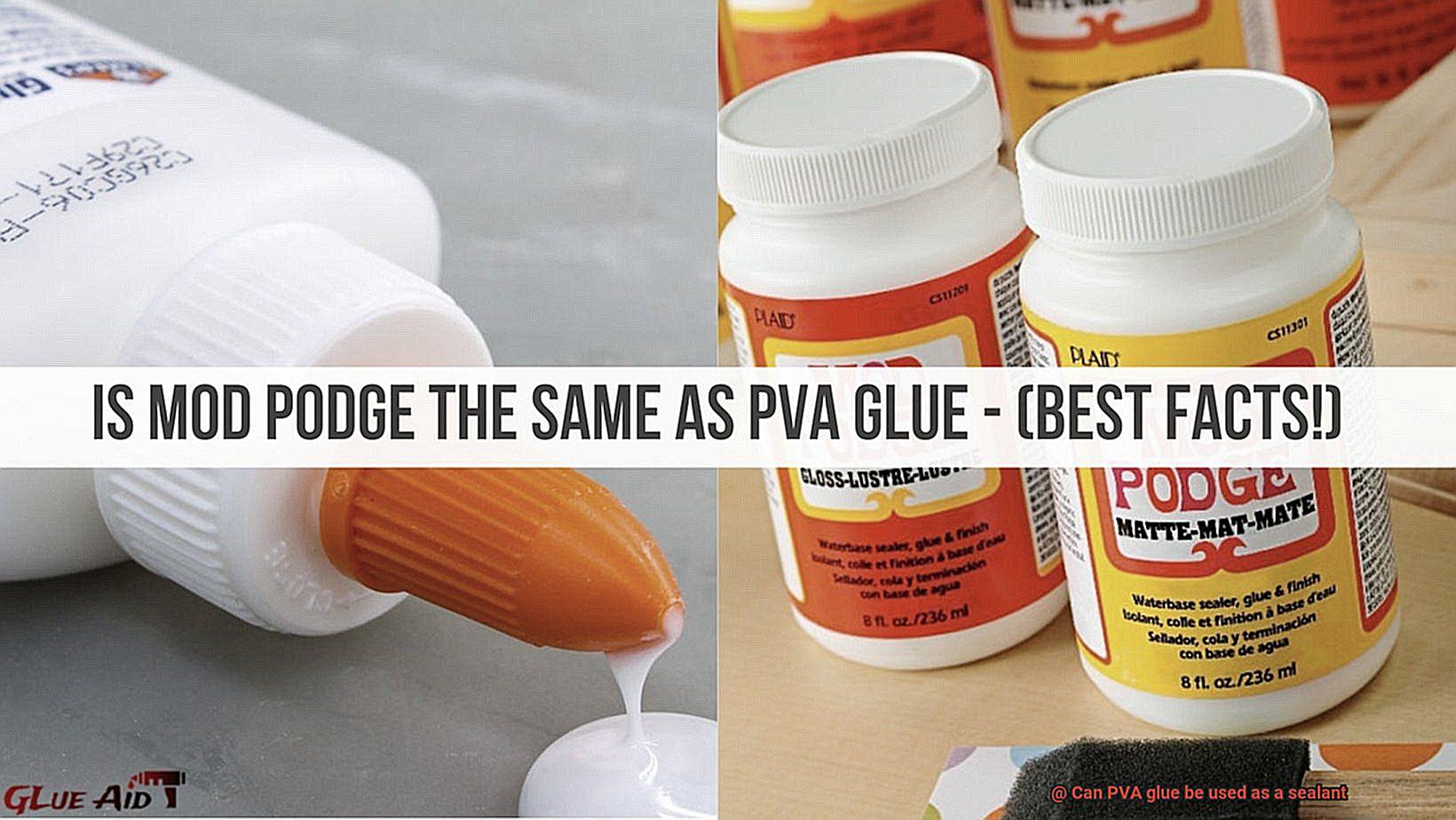
While it may seem like a cost-effective option, there are several disadvantages to consider before choosing PVA glue as your go-to sealant.
Firstly, PVA glue is not entirely waterproof. While it can resist water to some extent, prolonged exposure to moisture can cause it to break down and lose its adhesive properties. This means that if you’re using PVA glue as a sealant in areas that are prone to water exposure, such as bathrooms or kitchens, it may not hold up over time, leading to damage or mold growth.
Secondly, PVA glue has limited flexibility and can become brittle over time. This makes it unsuitable for sealing materials that expand and contract due to temperature changes or movement, such as wood or plastic. When used as a sealant on these materials, PVA glue can crack and break, leaving the surface vulnerable to damage.
Thirdly, PVA glue is susceptible to UV radiation. Exposure to sunlight can cause PVA glue to yellow and weaken, leading to compromised adhesive strength and sealing properties. This means that using PVA glue as a sealant in areas that receive direct sunlight, such as windowsills or outdoor furniture, may require frequent reapplication.
How to Use PVA Glue as a Sealant
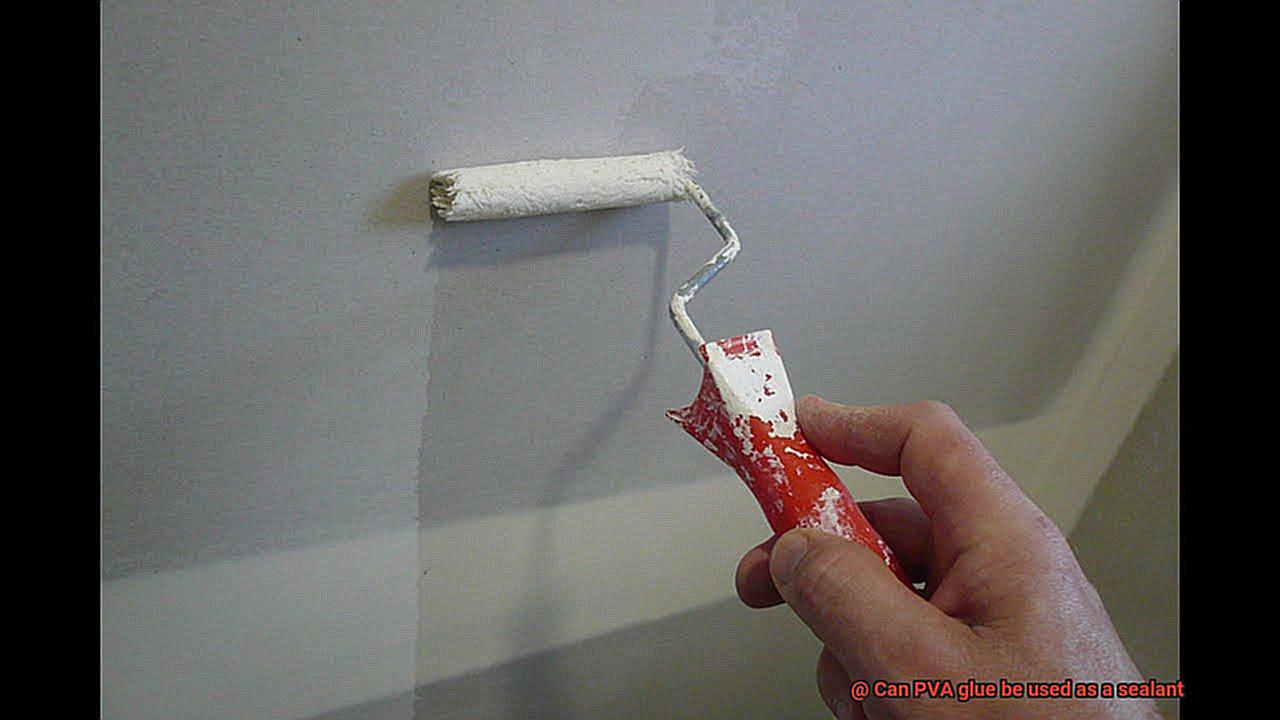
It’s versatile, easy to use, and affordable. One of its many uses is as a sealant. In this blog post, we will explore five subtopics to help you understand how to use PVA glue as a sealant effectively.
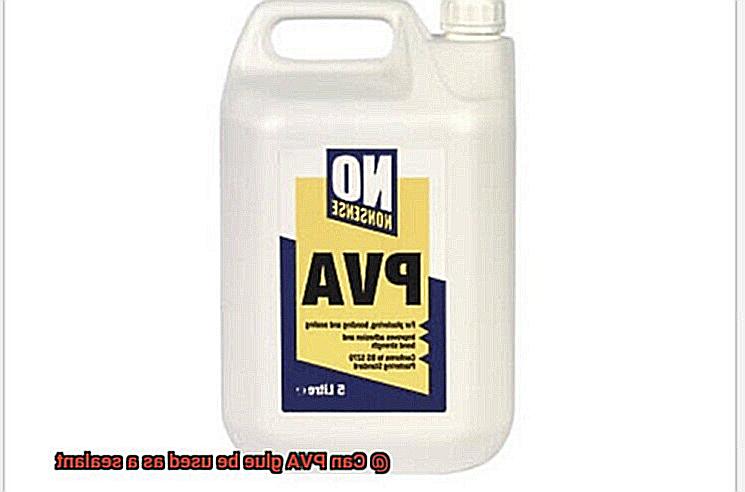
Choosing the Right Type of PVA Glue
The first step in using PVA glue as a sealant is choosing the right type of glue. Look for a clear or white PVA glue that dries transparently and is labeled as waterproof or water-resistant. These types of PVA glue are perfect for sealing surfaces that are exposed to moisture.
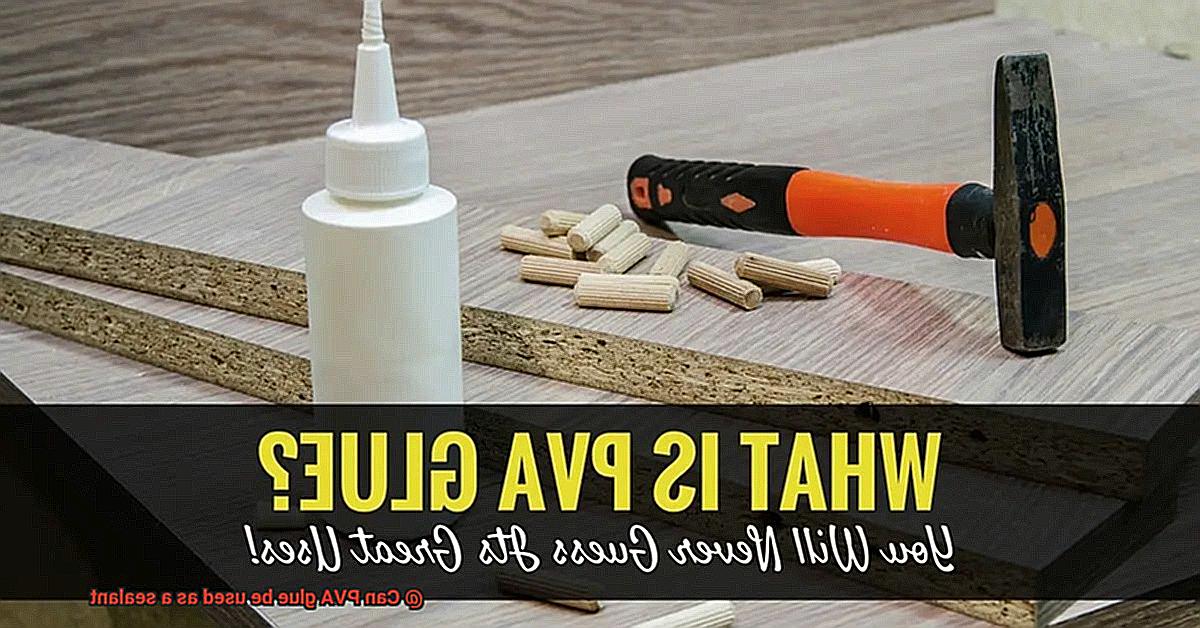
Preparing the Surface
Before applying the glue, ensure that the surface you want to seal is clean and dry. This step is crucial to ensure that the glue adheres properly and provides adequate protection. Use soap and water or a mild cleaning solution to clean the surface, then let it dry completely.
Applying the PVA Glue
Using a brush or roller, apply a thin layer of PVA glue evenly across the surface. Be careful not to miss any spots while spreading the glue. Avoid clumps or bubbles while applying the glue, which can result in an uneven finish.
Adding Additional Layers
To ensure that the sealant is strong and durable, allow the first layer of glue to dry completely before adding additional layers. The number of layers you apply depends on the level of protection you need for your project. However, make sure that each layer is thin and even, which will help prevent any lumps or bubbles from forming.
Allowing the Sealant to Dry
Once you have applied all necessary layers, allow the PVA glue to dry completely before using your sealed surface. The drying time can vary based on the humidity levels in your environment and thickness of layers applied. Generally, it takes around 24 hours for the glue to dry completely.
Alternatives to Using PVA Glue as a Sealant
While PVA glue can be effective, it’s not always the best option. That’s why it’s essential to explore other alternatives to PVA glue.
One highly versatile alternative to PVA glue is silicone sealant. Whether you’re working on indoor or outdoor projects, silicone sealant is a durable and reliable adhesive that adheres well to a variety of surfaces, including glass, metal, and plastic. It’s an excellent choice for sealing windows, doors, and other applications where a strong bond is required.
Epoxy resin is another great option when seeking an alternative to PVA glue. This two-part adhesive forms a strong and long-lasting bond when mixed together and can be used for sealing wood, metal, and concrete surfaces. Epoxy resin sets quickly and can withstand high temperatures, which makes it ideal for industrial applications.
For those who need a versatile adhesive that can handle even the toughest jobs, polyurethane sealant is an excellent alternative to PVA glue. It adheres well to wood, metal, and concrete surfaces and is resistant to water and extreme temperatures.
3HU_LhbX7-U” >
Also Read: Can you use Elmer’s glue as a sealant?
Conclusion
To sum up, PVA glue can be a suitable sealant in specific circumstances, but it’s crucial to comprehend its limitations and the correct application methods. As a water-based adhesive, PVA glue forms a robust bond with various materials, making it an affordable and adaptable option for DIY projects. When utilized as a sealant on porous surfaces like wood or paper, PVA glue can provide protection against moisture, dust, and UV rays.
Nevertheless, it’s vital to note that PVA glue isn’t entirely waterproof and may not work well on non-porous surfaces such as metal or plastic. Additionally, it has limited flexibility and can become brittle over time. Therefore, if you require a proper sealant that can withstand harsh weather conditions or extreme temperatures for your project, it’s best to use specialized products like silicone sealant or epoxy resin.
When using PVA glue as a sealant, remember to select the appropriate type of glue labeled as waterproof or water-resistant and prepare the surface adequately before applying thin layers of glue evenly. Allow each layer to dry entirely before adding additional layers for optimal outcomes.
All things considered, while PVA glue may not be the ultimate solution for every sealing project out there, its affordability, ease of use, and versatility make it worth considering for specific applications.

